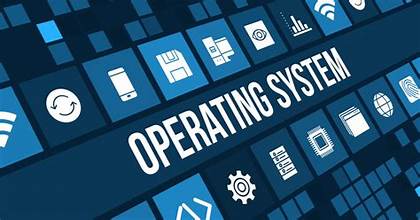
1. What is the basic unit of information in computing?
a) Byte
b) Bit
c) Kilobyte
d) Megabyte
Answer: b) Bit
2. What does CPU stand for?
a) Central Processing Unit
b) Computer Personal Unit
c) Central Personal Unit
d) Computer Processing Unit
Answer: a) Central Processing Unit
3. Which of the following is an example of secondary storage?
a) RAM
b) Cache
c) Hard Disk Drive
d) CPU
Answer: c) Hard Disk Drive
4. Which programming language is used to build websites?
a) Java
b) C++
c) HTML
d) Python
Answer: c) HTML
5. What does URL stand for?
a) Universal Resource Locator
b) Uniform Resource Locator
c) Universal Reference Locator
d) Uniform Reference Locator
Answer: b) Uniform Resource Locator
6. Which of the following is a programming language?
a) Photoshop
b) Excel
c) Python
d) PowerPoint
Answer: c) Python
7. What is the main purpose of an operating system?
a) To run computer hardware
b) To protect against viruses
c) To manage computer resources
d) To create and edit documents
Answer: c) To manage computer resources
8. Which component of a computer is responsible for displaying graphics on the screen?
a) Motherboard
b) Central Processing Unit
c) Graphics Processing Unit
d) Random Access Memory
Answer: c) Graphics Processing Unit
9. Which of the following is an example of an input device?
a) Monitor
b) Printer
c) Keyboard
d) Speaker
Answer: c) Keyboard
10. What does HTML stand for?
a) Hypertext Markup Language
b) Hyperlink Markup Language
c) Hypertext Machine Language
d) Hyperlink Machine Language
Answer: a) Hypertext Markup Language
11. Which of the following is a popular database management system?
a) Microsoft Word
b) Microsoft Excel
c) Microsoft PowerPoint
d) Microsoft Access
Answer: d) Microsoft Access
12. What is the purpose of a firewall in computer networks?
a) To prevent unauthorized access
b) To increase network speed
c) To store data backups
d) To manage email accounts
Answer: a) To prevent unauthorized access
13. Which of the following is an example of an output device?
a) Mouse
b) Keyboard
c) Printer
d) Scanner
Answer: c) Printer
14. Which programming language is often used for data analysis and scientific computing?
a) Java
b) C++
c) Python
d) JavaScript
Answer: c) Python
15. What does RAM stand for?
a) Random Access Memory
b) Read-Only Memory
c) Read and Modify
d) Random Algorithm Memory
Answer: a) Random Access Memory
16. Which of the following is a web browser?
a) Microsoft Word
b) Microsoft Excel
c) Google Chrome
d) Microsoft PowerPoint
Answer: c) Google Chrome
17. What is the purpose of a virtual machine?
a) Running multiple operating systems on a single physical machine
b) Creating online surveys
c) Managing computer networks
d) Backing up data
Answer: a) Running multiple operating systems on a single physical machine
18. Which of the following is a type of computer virus?
a) Trojan horse
b) Mouse trap
c) Spider web
d) Flashlight
Answer: a) Trojan horse
19. Which of the following is an example of a music streaming service?
a) Google Drive
b) Microsoft Word
c) Adobe Photoshop
d) Spotify
Answer: d) Spotify
20. What is the purpose of a cookie in web browsing?
a) Storing user preferences and tracking website activity
b) Creating online surveys
c) Running computer programs
d) Encrypting network traffic
Answer: a) Storing user preferences and tracking website activity
21. Which of the following is a commonly used computer input device?
a) Mouse
b) Projector
c) Speaker
d) USB drive
Answer: a) Mouse
22. What is the purpose of a cache in computer architecture?
a) Temporarily storing frequently accessed data for faster retrieval
b) Displaying web pages
c) Controlling network traffic
d) Managing user accounts
Answer: a) Temporarily storing frequently accessed data for faster retrieval
23. What does the term “HTML5” refer to?
a) The latest version of the HTML markup language
b) A type of computer virus
c) A computer programming language
d) A data encryption algorithm
Answer: a) The latest version of the HTML markup language
24. Which of the following is not an example of a computer peripheral?
a) Monitor
b) Printer
c) CPU
d) Webcam
Answer: c) CPU
25. What is the purpose of a VPN (Virtual Private Network)?
a) Establishing a secure connection over a public network
b) Creating graphical designs
c) Managing computer networks
d) Scanning for malware
Answer: a) Establishing a secure connection over a public network
26. What is the function of a database management system (DBMS)?
a) Storing, organizing, and managing data in databases
b) Printing documents
c) Running computer programs
d) Creating website layouts
Answer: a) Storing, organizing, and managing data in databases
27. Which of the following is an example of a high-level programming language?
a) Python
b) Assembly language
c) Binary code
d) Machine language
Answer: a) Python
28. What is the purpose of an input/output port on a computer?
a) Connecting external devices for data transfer
b) Managing computer memory
c) Controlling the CPU’s operation
d) Generating random numbers
Answer: a) Connecting external devices for data transfer
29. Which of the following is an example of a computer network topology?
a) Star
b) Square
c) Triangle
d) Circle
Answer: a) Star
30. What is the purpose of a UPS (Uninterruptible Power Supply) in computer systems?
a) Providing backup power during electrical outages
b) Protecting against viruses
c) Cleaning computer screens
d) Enhancing internet speed
Answer: a) Providing backup power during electrical outages




